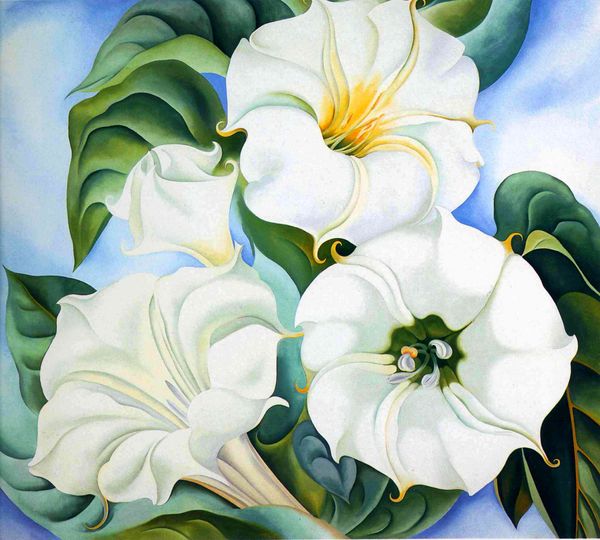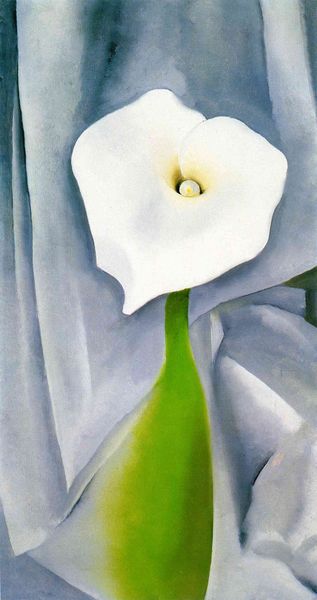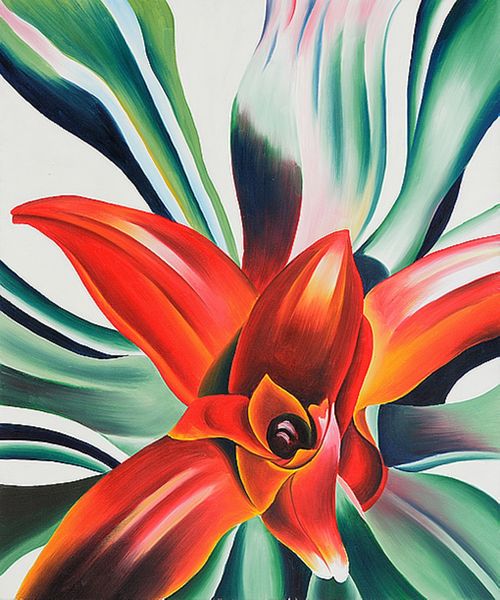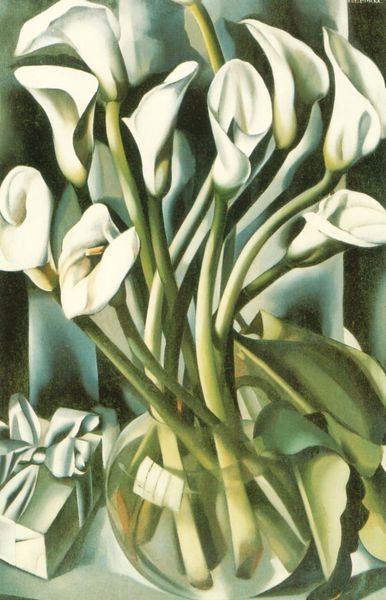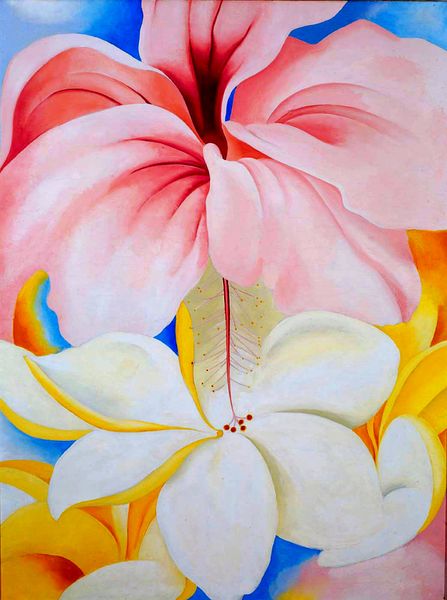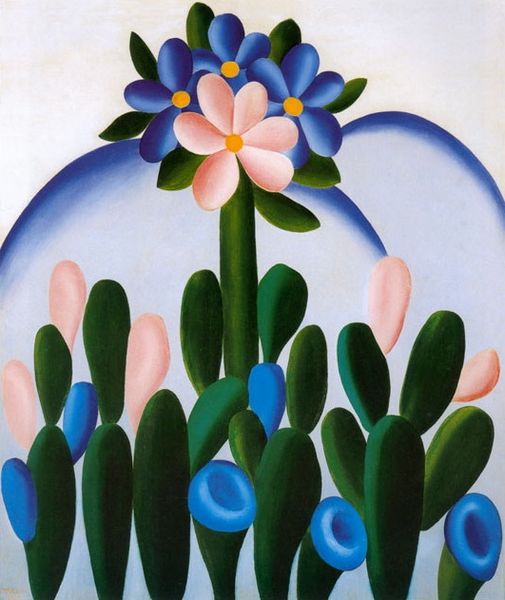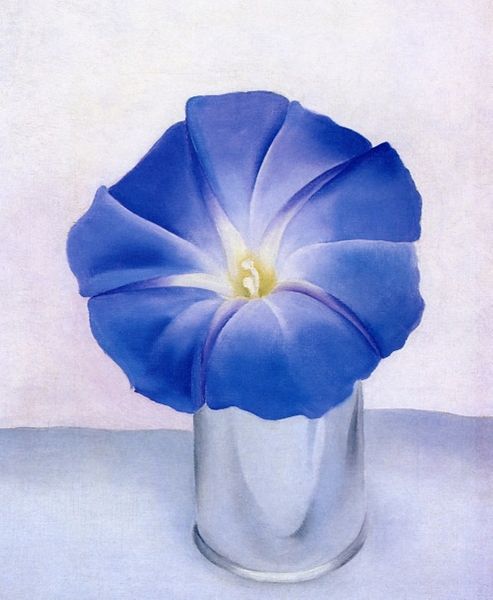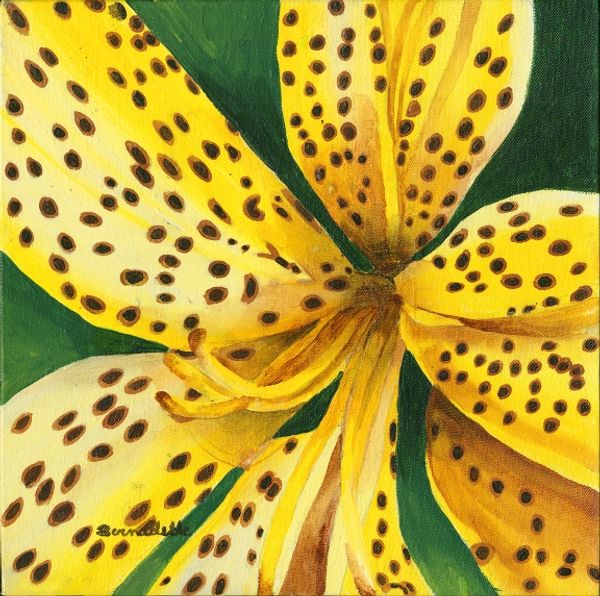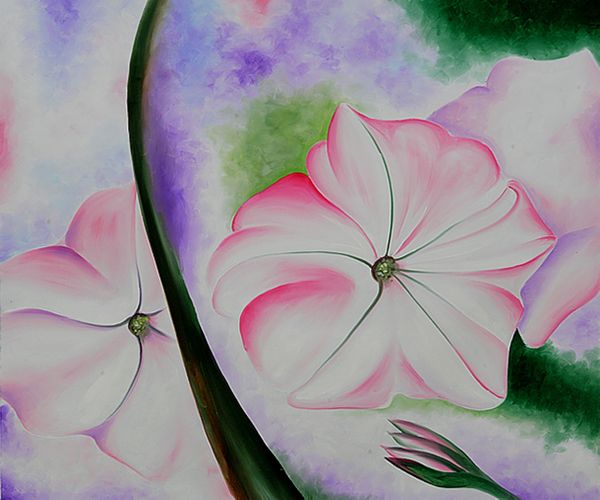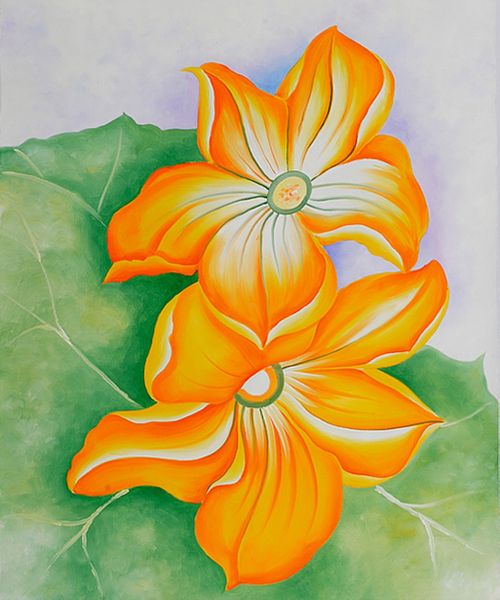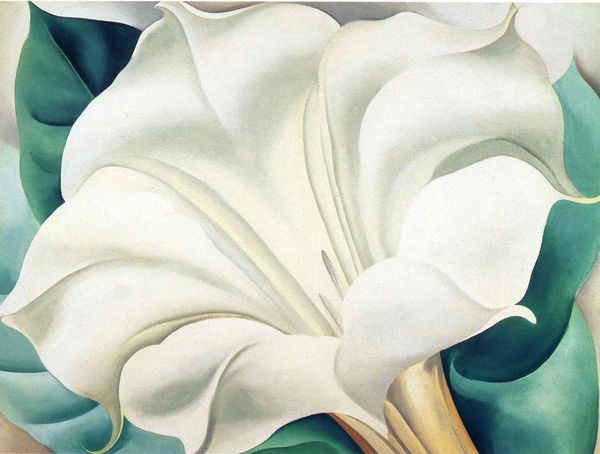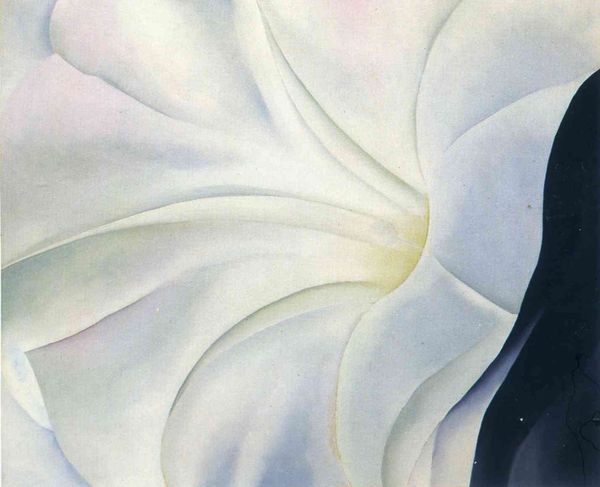
Copyright: Georgia O'Keeffe,Fair Use
Editor: Here we have Georgia O'Keeffe's "Jimson Weed," painted in 1932 using oil paint. It's immediately striking – the scale feels so monumental, almost overwhelming. What do you see in this piece, looking at it formally? Curator: The compositional choices are paramount. Observe how O'Keeffe crops the flower, bringing it to the very forefront. This intense magnification emphasizes the interplay of form and light, abstracting the subject even as it appears representational. Consider also the carefully orchestrated palette. The subtle gradations of white, for instance, are critical to its structure, its palpable massing. What about the relationship between the petals and the leaves? Editor: They feel almost like echoing forms. The curvature and rhythm established in the petals seem to be mirrored, though less overtly, in the arrangement of the leaves. It creates a kind of visual harmony, or resonance. Curator: Precisely. O'Keeffe uses repetition and variation to build a complex formal language. It isn't simply a flower, it’s a study in shapes and their relationships. Notice, also, how the smooth surface of the petals contrasts with the linear veins of the leaves. She calls our attention to the fundamental elements of painting itself – line, shape, color, texture. What impression does that leave you with? Editor: I'm beginning to see it less as a simple depiction of a flower and more as an exploration of pure form and its expressive potential, which makes the visual experience all the more engaging. Curator: It showcases her precision and dedication to formal elements, doesn’t it? Considering the interplay of form and space lets you unlock the artistic ingenuity behind the work. Editor: I'll definitely look at O'Keeffe, and other artists, with more of a focus on their use of structure and design.
Comments
No comments
Be the first to comment and join the conversation on the ultimate creative platform.
